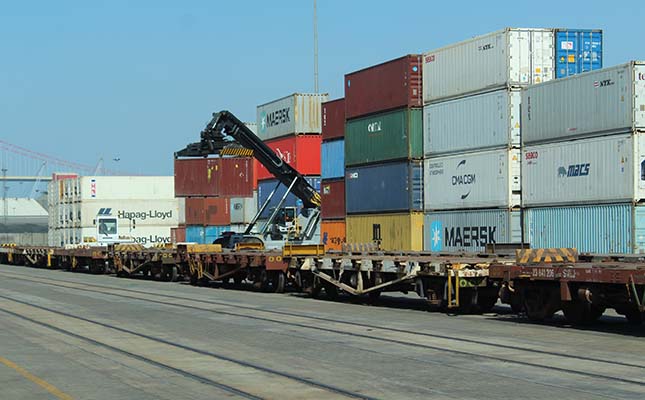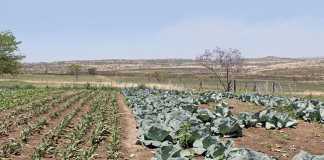
Photo: Lindi Botha
The Citrus Growers’ Association of Southern Africa and multinational logistics company DP World, which holds the concession to operate the export terminal at the Port of Maputo, recently hosted stakeholders on a tour of the facilities in Mozambique.
The case for South African producers to divert fruit exports from the Port of Durban to the Port of Maputo in Mozambique is growing stronger.
While delays and other problems in Durban persist, shipments from Maputo are progressing smoothly and quickly to their destinations, benefitting the entire value chain, according to stakeholders.
Exports through this port have taken place against the backdrop of continuing problems at the Port of Durban. Since last year, the Citrus Growers’ Association of Southern Africa (CGA) has intensified efforts to encourage the citrus industry to use the Maputo port after numerous citrus shipments from Durban failed to reach their destinations on time.
Mitchell Brooke, the CGA’s logistics development manager, noted that Maputo’s port was not only closer to many citrus producers than Durban was, but was also closer to a number of the export markets.
“The port could become an important gateway to Middle Eastern and Asian markets. Because the Malelane area, adjacent to Mozambique, is known as the ‘grapefruit belt’, and many of these shipments are destined for Japan, it makes sense to use Maputo instead of Durban.”
The CGA has also involved stakeholders along Transnet’s railway line from Johannesburg to Maputo so that fruit from the Malelane and Komatipoort areas can be loaded at sidings.
This would substantially lower transport costs and save time for the citrus industry. There were also further opportunities to erect infrastructure that would see other export industries concentrated in the Lowveld region, such as avocados and macadamia nuts, being sent by rail to Maputo.
The project was not without its challenges, however, and Brooke said more collaboration was needed from all stakeholders to fully exploit the benefits of sending fruit by rail and truck to the port. This meant ensuring significant volumes to justify erecting central cold-storage facilities, and ensuring that containers had loads in both directions to reduce costs.
John MacDonald, regional reefer manager at shipping company CMA CGM, said high-cube containers were restricted by weighbridge requirements in Mozambique. Farmers, could, however, send superlink trucks.
“Farmers need to collaborate to fill a superlink so that they don’t have to wait until they can fill one. This will also result in savings.”
Although the transit time for some shipments from Maputo was longer than that from Durban, MacDonald said that, considering the long queues off the coast near Durban, and the time it took to start the journey, the time-frames evened out.
“In some instances, it’s even faster to go through Maputo. Part of our argument has been that farmers must stop thinking about port-to-port time, but rather packhouse-to-port-of-discharge time.
“We’ve had instances where fruit packed on a Friday morning in Karino [near Mbombela] arrived in the port in the evening and the vessel sailed at midnight. That will never happen in Durban.”
Regarding long standing times for trucks at Lebombo Border Control (near Komatipoort), a special concession had been made for groups of trucks to be escorted past the queue by police officials. This had reduced the border crossing time to three hours.
Mark Neel, chief commercial officer at DP World Maputo, said that “zero vessel waiting times and no congestion mean there are no delays”.
“Terminal truck turnaround time is around 18 to 25 minutes, and the port offers consistent high crane productivity. Farmers have two options when sending cargo, either packing at the Maputo ambient warehouse, or packing on-farm and sending the full reefers to the port.”
Neel said opportunities to invest in cold-storage facilities were being investigated, and more should be known next year.
Maputo currently aims to handle between 15 000 and 20 000 pallets of citrus in the 2022 season.











